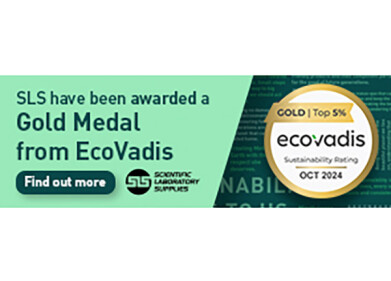-
 The RMS offers congratulations to Professor Stefan Hell who gave a plenary lecture at MICROSCIENCE 2008 with his talk ‘Breaking Abbe’s barrier’.
The RMS offers congratulations to Professor Stefan Hell who gave a plenary lecture at MICROSCIENCE 2008 with his talk ‘Breaking Abbe’s barrier’.
News & views
Nobel Prize Awarded for Breaking Optical Microscopy Boundaries
Oct 21 2014
Eric Betzig, Stefan W. Hell and William E. Moerner have received the Nobel Prize in Chemistry 2014 for groundbreaking work in super-resolved fluorescence microscopy which has taken optical microscopy into the dimensions of the nanoworld.
Today scientists are able to visualise the pathways of individual molecules inside living cells; for example, they can see how molecules create synapses between nerve cells in the brain; they can track proteins involved in Parkinson’s, Alzheimer’s and Huntington’s diseases as they aggregate; they follow individual proteins in fertilized eggs as these divide into embryos.
For a long time optical microscopy was held back by a presumed limitation made by Ernst Ebbe in 1873 which stipulated that the physical limit for the maximum resolution of traditional optical microscopy could never become better than 0.2 micrometres. Helped by fluorescent molecules the Nobel Laureates in Chemistry 2014 have ingeniously circumvented this limitation.
Two separate principles are rewarded. One enables the method ‘stimulated emission depletion (STED) microscopy,’ developed by Stefan Hell in 2000. Two laser beams are utilised; one stimulates fluorescent molecules to glow, another cancels out all fluorescence except for that in a nanometre-sized volume. Scanning over the sample, nanometre for nanometre, yields an image with a resolution better than Abbe’s stipulated limit.
Eric Betzig and William Moerner, working separately, laid the foundation for the second method, ‘single-molecule microscopy.’ The method relies upon the possibility to turn the fluorescence of individual molecules on and off. Scientists image the same area multiple times, letting just a few interspersed molecules glow each time. Superimposing these images yields a dense super-image resolved at the nanolevel. In 2006 Eric Betzig utilised this method for the first time.
Digital Edition
Lab Asia 31.6 Dec 2024
December 2024
Chromatography Articles - Sustainable chromatography: Embracing software for greener methods Mass Spectrometry & Spectroscopy Articles - Solving industry challenges for phosphorus containi...
View all digital editions
Events
Jan 22 2025 Tokyo, Japan
Jan 22 2025 Birmingham, UK
Jan 25 2025 San Diego, CA, USA
Jan 27 2025 Dubai, UAE
Jan 29 2025 Tokyo, Japan


















